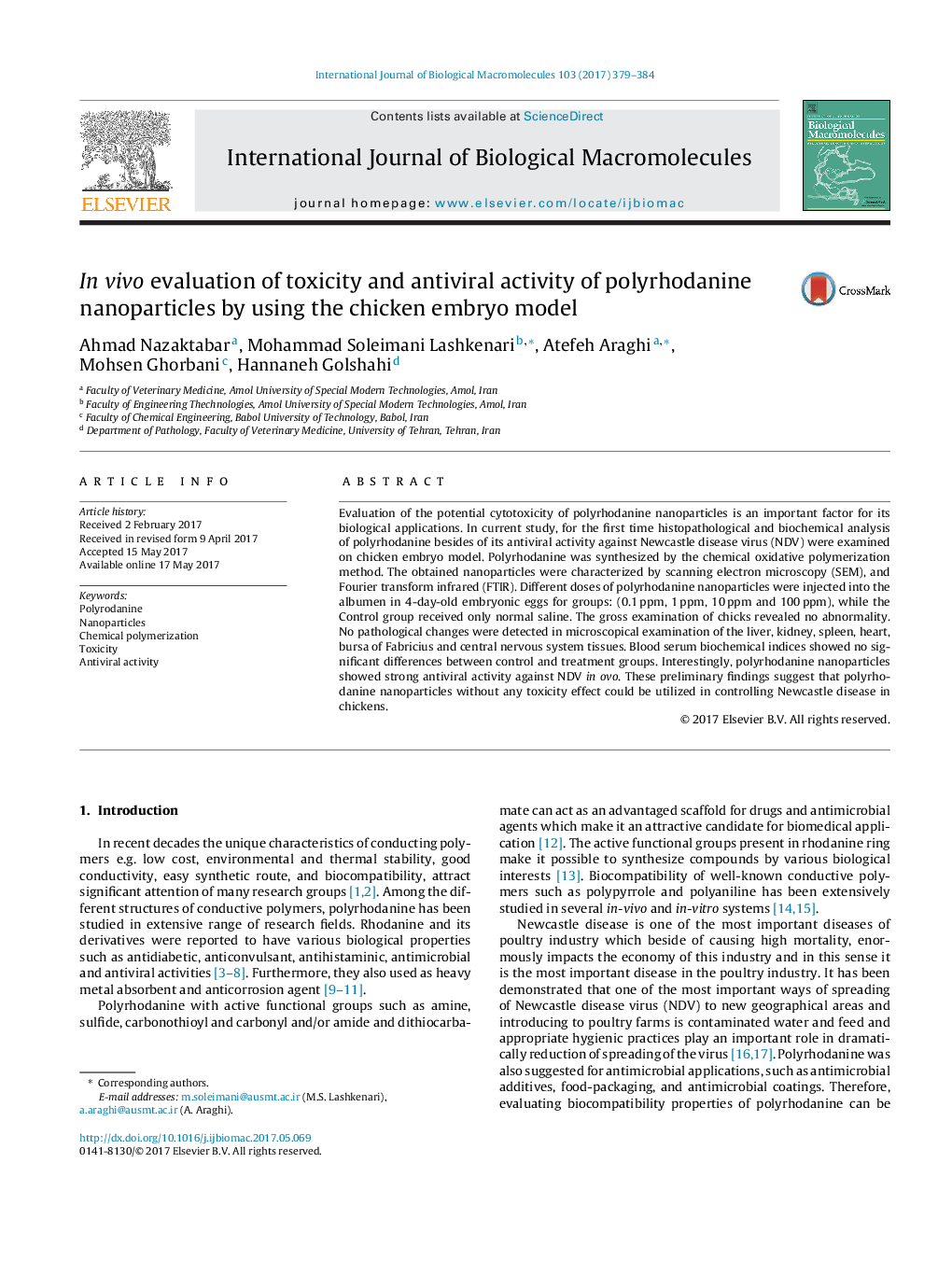| Article ID | Journal | Published Year | Pages | File Type |
|---|---|---|---|---|
| 5511865 | International Journal of Biological Macromolecules | 2017 | 6 Pages |
Evaluation of the potential cytotoxicity of polyrhodanine nanoparticles is an important factor for its biological applications. In current study, for the first time histopathological and biochemical analysis of polyrhodanine besides of its antiviral activity against Newcastle disease virus (NDV) were examined on chicken embryo model. Polyrhodanine was synthesized by the chemical oxidative polymerization method. The obtained nanoparticles were characterized by scanning electron microscopy (SEM), and Fourier transform infrared (FTIR). Different doses of polyrhodanine nanoparticles were injected into the albumen in 4-day-old embryonic eggs for groups: (0.1Â ppm, 1Â ppm, 10Â ppm and 100Â ppm), while the Control group received only normal saline. The gross examination of chicks revealed no abnormality. No pathological changes were detected in microscopical examination of the liver, kidney, spleen, heart, bursa of Fabricius and central nervous system tissues. Blood serum biochemical indices showed no significant differences between control and treatment groups. Interestingly, polyrhodanine nanoparticles showed strong antiviral activity against NDV in ovo. These preliminary findings suggest that polyrhodanine nanoparticles without any toxicity effect could be utilized in controlling Newcastle disease in chickens.
Graphical abstractDownload high-res image (139KB)Download full-size image
